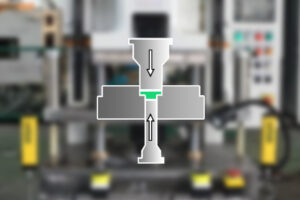
What is Sizing in Powder Metallurgy?
Sizing is one of secondary operations in powder metallurgy. It re-presses the sintered parts to achieve higher accuracy. Why do that? This is because during
What is blending in powder metallurgy?
Combine powders, alloying elements, and lubricants to determine the characteristics of finished product. This process is referred to as blending or mixing.
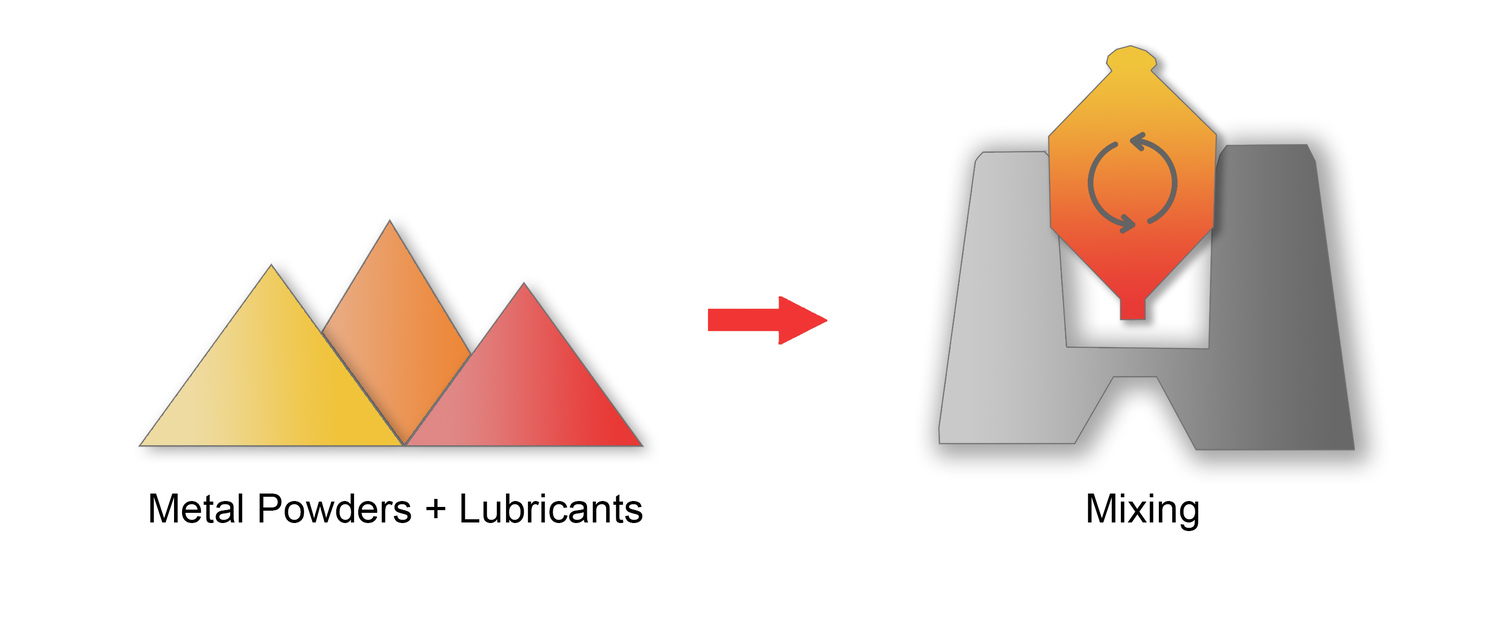
This blog takes a deep look at powder metallurgy blending process. You will learn the following.
Blending process usually has the following steps.
Choose the raw material for blending process, including basic metal powders and alloying elements.
Metal powders are the cornerstone of the powder metallurgy process, influencing the performance of the finished component. And alloying elements directly improves the corrosion resistance and mechanical strength of parts.
Commonly used powder metals include:
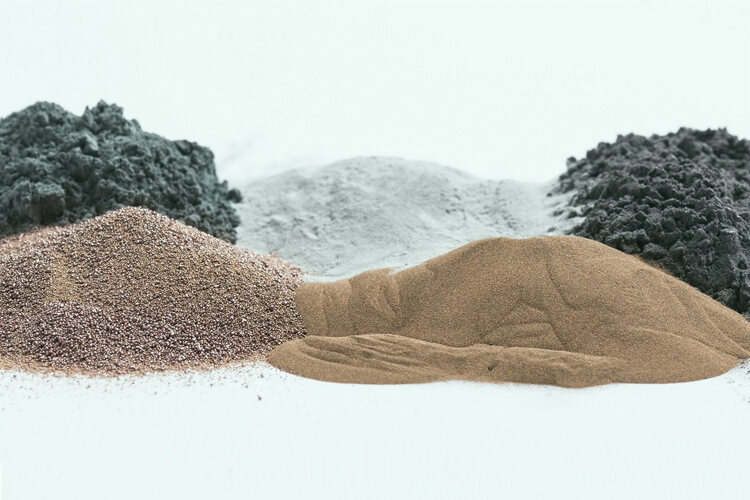
Main alloying elements are as follows.
After selecting the powders, calculate the weight percentages for each material based on the final product’s requirements. Here are the powder metallurgy material standards in the United States, Japan, and Germany.
Metal Powder Industries Federation (MPIF)
MPIF Standard 35: This standard defines the right materials for making powder metal parts.
Japanese Standards Association (JSA)
JIS Z 2500: It specifies the requirements for sintered metal materials, including their chemical composition and mechanical features.
German Institute for Standardization(DIN)
DIN 30910: This standard specifies the general characteristics, classification, examining, and quality requirements of sintered metal materials excluding hard metals.
During blending process, metal powders are mixed by blending equipment, such as V mixer. The purpose of blending process in powder metallurgy is to make even metal powders.
According to the needs, you can adjust the speed and swing amplitude appropriately to achieve a better mixing effect.
Powder metallurgy mixers have a feed inlet and an outlet for easy operation. And it can mix raw materials ranging from several hundred kilograms to a ton at a time. Usually, mixing 1,000 kg of metal powder takes about 1 hour.
The time and speed of blending process are carefully controlled to prevent demixing. This is when powders separate because of differences in density or particle size. In addition, mixed metal powders are typically kept for no more than a week.
Binders offer essential adhesion between the particles. This helps mixed powders remain intact during the following compaction process.
Main binders are as follows:
Lubricants reduce the friction between metal particles, which makes it easier for the powders to flow when mixed. It makes the mixing process smoother and more efficient.
Metal Powder attributes such as flow rate and density are examined to ensure compliance with standards. Evaluate
Testing mainly include:
Flow rate shows how fast the powder flows through a funnel or orifice. A higher flow rate indicates easier handling. Factors such as particle shape, size, and texture affect it.
Bulk density measures the mass per unit volume of the powder when poured into a container. It shows how densely the powder will pack together when compacted. A higher bulk density suggests the powder will form denser, more stable parts.
The size of powder particle influences how they mix, flow, and pack together. When particle sizes are similar throughout, it assists the mixture stay even and ensures the final product is consistent. Particle size analysis uses techniques like sieving or laser diffraction to ensure consistency.
Contaminants such as sulfur, phosphorus or oxygen can lead to poor mechanical properties and other defects. Analyze chemical composition to avoid defects.
The following are the parameters of several metal powders.
Material | Flow Rate
| Bulk Density | Particle Size | Chemical Composition
|
Copper powder | / | 3.76 g / cm3 | 45 µm / 325 mesh/ 0.045 mm
| Cu 99,96% (Al) Aluminium : 0.004% Max (Cd) Cadmium: 0.001% Max (Pb) Lead : 0.001% Max |
Iron powder | 26.3 s/50g | 2.94 g / cm3 | 140 µm / 105 mesh / 0.140 mm | Carbon (C) : 0.004% Sulfur (S) : 0.0101% Oxygen content (O): 0.08% Manganese (Mn): 0.179%
|
Stainless steel powder 316L | / | 2.82 g / cm3 | 45 µm / 325 mesh / 0.045mm
| Ot: 0.39 Carbon (C) : 0.038% Molybdenum (Mo): 2.90% Silicon (Si) : 0.48% Chromium (Cr): 16.00% Nickel (Ni): 13.40% |
Source: Wide Range Metals
Several key factors influence the powder metallurgy mixing process:
Uniform particle distribution promotes better powder cohesion, reduces voids, and results in a more balanced mixture. Smaller particles mix more smoothly, improving powder flow and compaction. This helps powder metal parts reach consistent mechanical properties.
Spherical particles easily slide over each other and blend well. Their smooth shape lowers friction, helping them to move and mix better.
Meanwhile, irregular or angular particles are different. They tend to lock together, forming a strong bond that makes the final product stronger. However, these irregular shapes can also disrupt smooth mixing, causing uneven blending.
A tumbler mixer features a cylindrical container that rotates on a platform. Its smooth interior stops powders from sticking and makes sure they mix evenly. It’s gentle and perfect for mixing fine metal powders without damaging them.
This mixer has two conical sections joined at the bases, forming a diamond shape. It rotates horizontally along its axis. This design is good for mixing powders of different sizes and densities. So it’s effective at creating uniform mixtures and preventing separation.
V mixer has a V-shaped chamber that spins around a horizontal axis. The V shape makes powders to slide and mix back and forth. This motion helps distribute the powders evenly and Precludes clumping.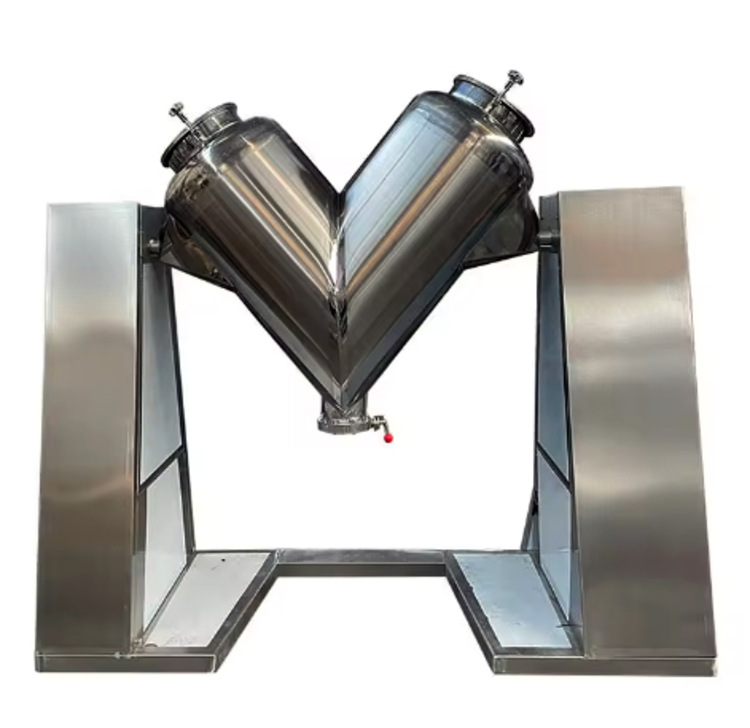
It has a U-shaped trough with two ribbon-like blades rotating in opposite directions, ensuring balanced distribution of powders. The blades push the powders back and forth, mixing them along the trough. This design is effective for large batches, minimizing segregation.
Planetary mixers have a central mixing blade that spins on its axis while orbiting the container. This dual movement ensures thorough mixing and avoids segregation, creating a consistent blend. The mixer also ensures that the powders reach all areas of the container, reducing Inconsistent mixing.
Powder metallurgy mixing process is beneficial to the environment in some ways. It uses recyclable and Biodegradable materials, which helps minimize environmental damage.
Also, using mixing techniques that waste less and energy-efficient mixers facilitates in lower the carbon footprint
Yes, the powder metallurgy mixing
needs a separate space. Dust can spread and harm air quality, so a dedicated area is important.
This space should include air purification and dust removal equipment to reduce the impact on the environment. Moreover, this process is a key concern for the China Environmental Protection Bureau.
Yes, handling metal powders can be harmful. Breathing in the fine dust can cause lungs problems. Besides, the powders can irritate skin or result allergies. That’s why it’s important to wear masks and gloves. It’s equally important to keep the workplace well-ventilated to protect workers’ health.

Sizing is one of secondary operations in powder metallurgy. It re-presses the sintered parts to achieve higher accuracy. Why do that? This is because during
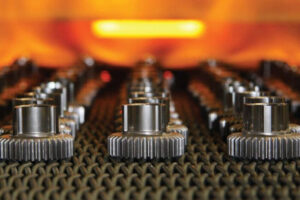
Wondering why sintering process in powder metallurgy is important? It significantly boosts the strength, density, and structural integrity of powder metal parts. This blog post
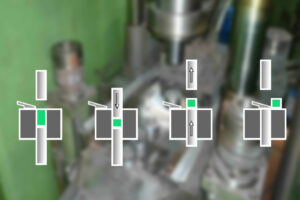
The manufacturing of powder metallurgy parts starts with compaction. This process applies intense pressure to create customized parts that have specific strength, density, and complex
More than 10,000 developed powder metallurgy products, including sintered gears, pulleys, impellers, sprockets, hubs, rotors, oil bushings, etc., Get free samples without a tooling fee before placing an order!
BLUE MACHINES is a leader in powder metallurgy manufacturing, providing a full set of powder metallurgy processes, from designing, tooling, compacting, sintering, sizing, and hardening to the final finished products.
Find your sintered parts in our shop without tooling fees.
Email: [email protected]
Copyright © 2024 NINGBO BLUE MACHINES CO., LTD. | All Rights Reserved.